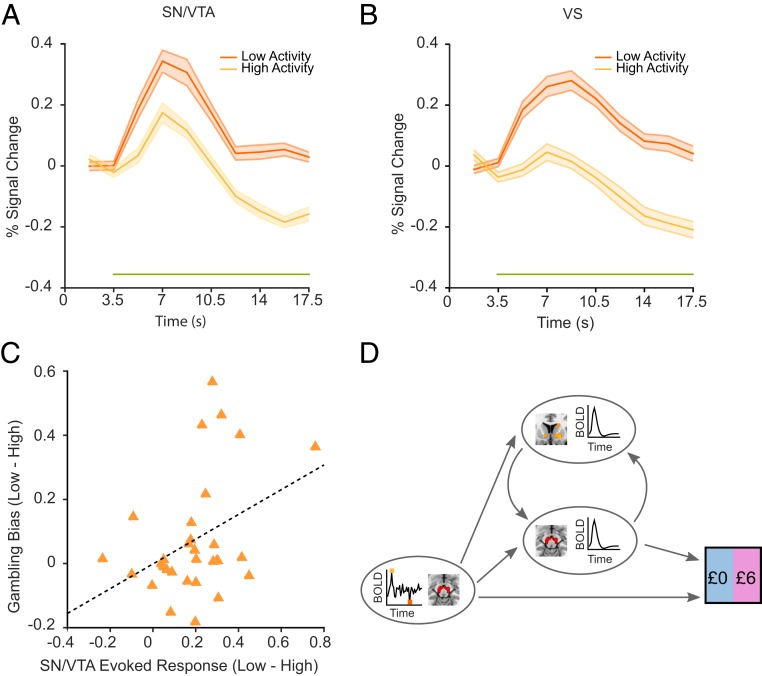Fig. 3.
Endogenous fluctuations modulate risk taking via task-evoked responses. (A and B) Endogenous fluctuations lead to distinct task-evoked response patterns with greater BOLD responses in SN/VTA and VS when offers are presented against a background of low endogenous SN/VTA activity. Percent signal change was calculated relative to the 2 volumes following stimulus onset to correct for differences in starting baseline. The green horizontal line indicates statistical significance (P < 0.01). (C) The effect of endogenous SN/VTA activity on risk taking is associated with phasic task-evoked SN/VTA responses. Subjects with a larger difference in task-evoked responses between low and high activity conditions had larger differences in gambling bias parameter κ (r = 0.39; P = 0.03). (D) Mediation analysis shows task-evoked VS responses mediate the influence of endogenous SN/VTA fluctuations on risk taking through their influence on task-evoked SN/VTA responses, indicating the effect of endogenous SN/VTA fluctuations on behavior is under the influence of reciprocal dynamics between SN/VTA and VS.

